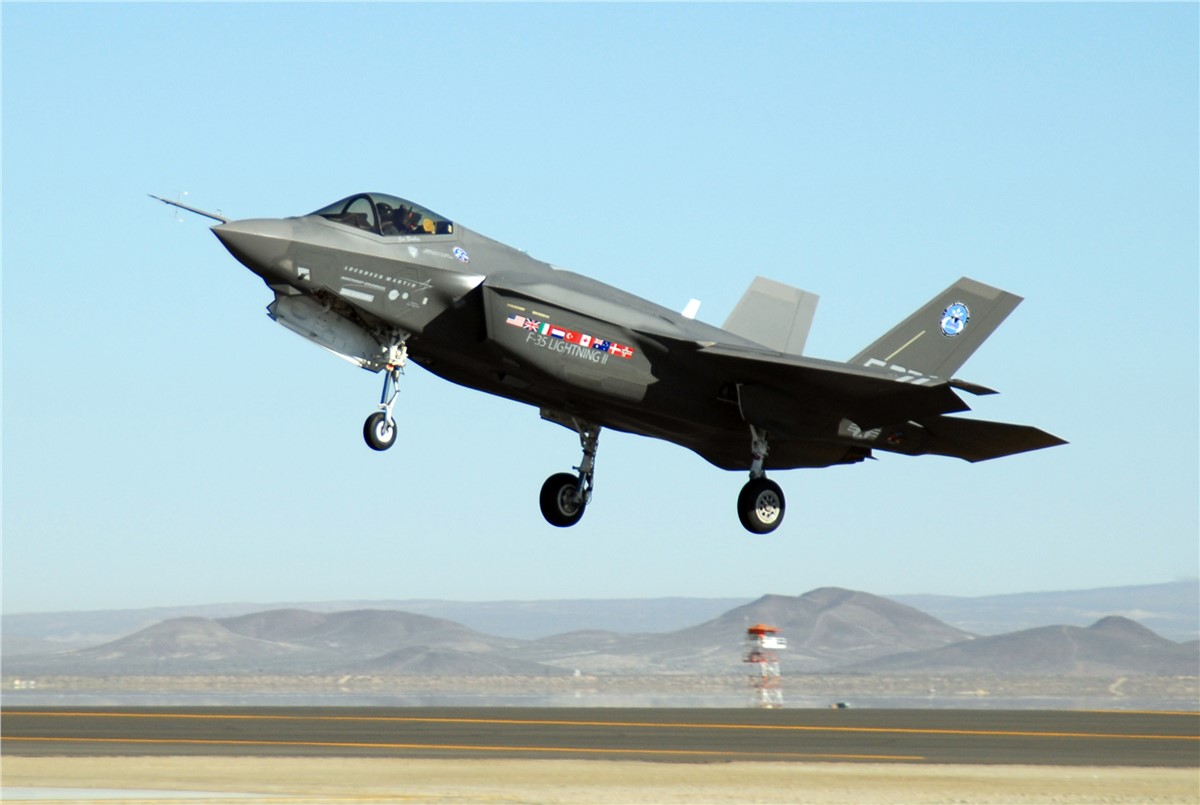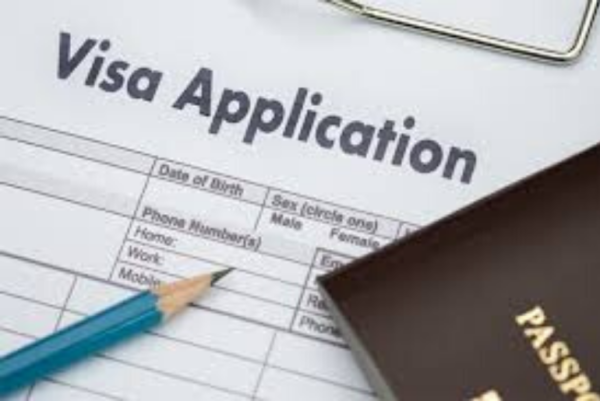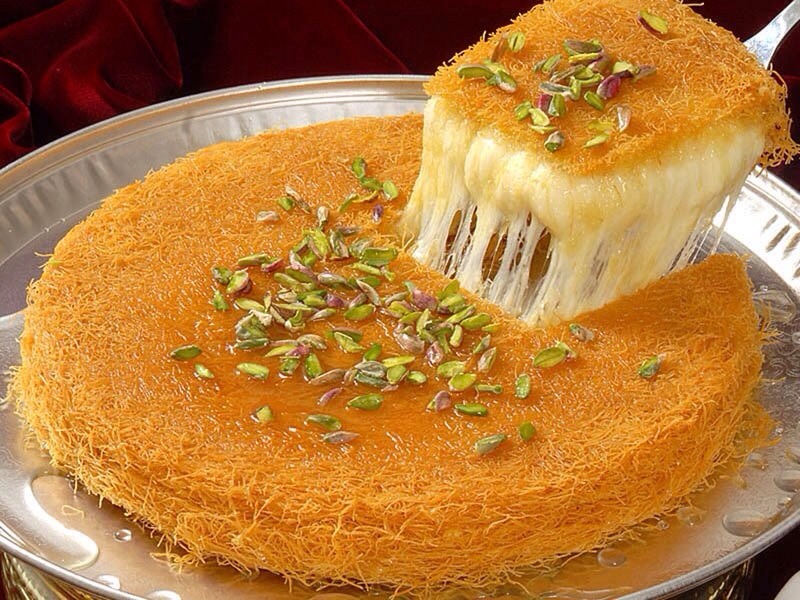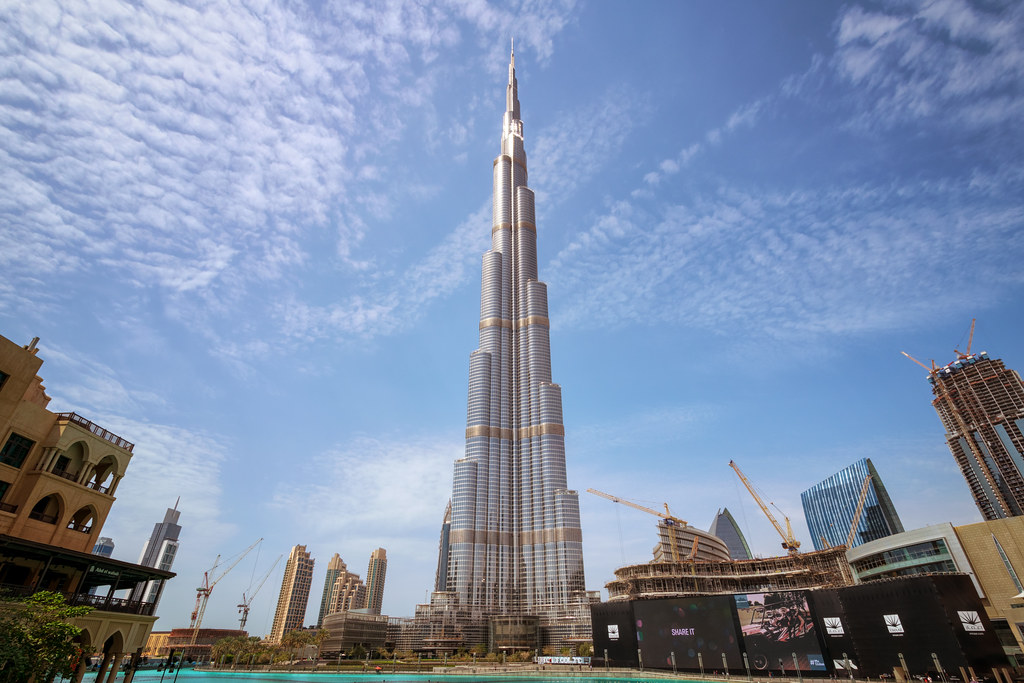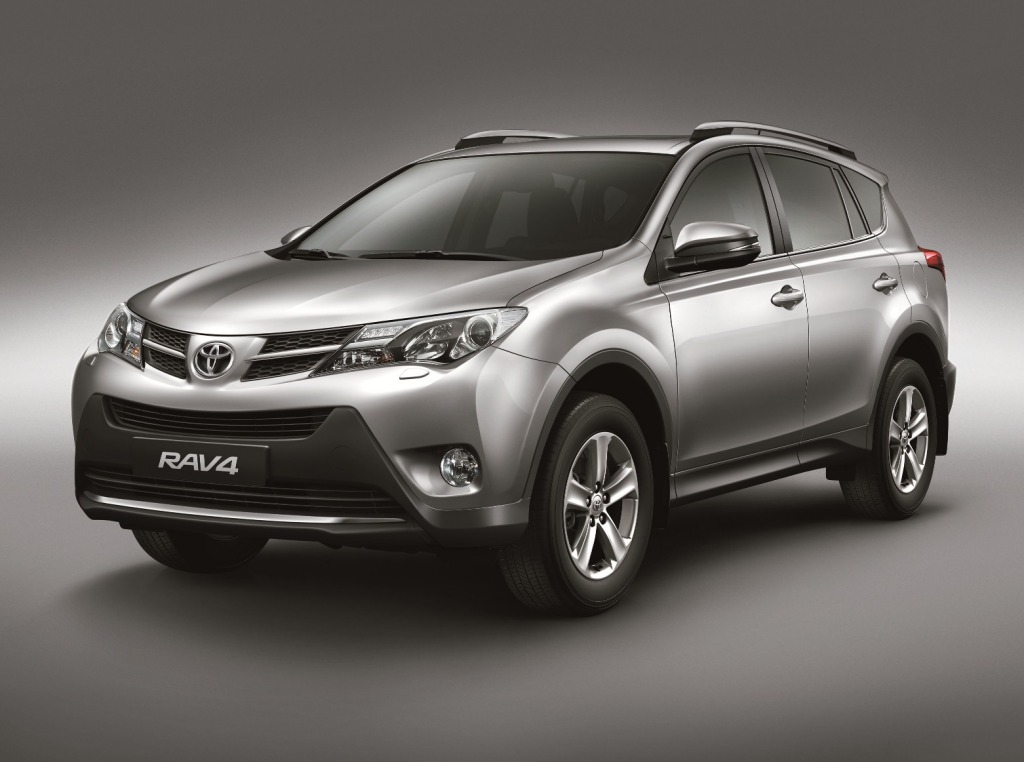Dubai is the most populous and the largest emirate in the UAE with approximately 2,502,715 people. Notably, it is the most progressive emirate among the seven emirates. Dubai is classified as an alpha city due to its strong economy.
Despite being a desert, the country has managed to utilize its resources and according to the 2015 statistics, it has an annual GDP of 105.6 billion USD. Unlike its neighboring emirates such as Abu Dhabi, the oil reserves of Dubai have been exhausted; oil contributes only 2 % of the total GDP of this emirate. Although it started as a port, Dubai has developed into a luxurious emirate that is home to the world's tallest building. The remarkable advancement of the Emirati women in every aspect of life constitutes another important yardstick for measuring the progress of the country as a whole. Accorded equal status and opportunities by the Constitution, women of the UAE today are making their presence felt in society in a pronounced way. Sheikha Fatima bint Mubarak, Sheikh Zayed's spouse, who takes credit for playing a major role in empowering women, established the UAE Women's Federation in Abu Dhabi in 1975, along with its branches in all of the other Emirates.
Since then, the UAE has been a sovereign nation, enjoying the profits of its natural resources—its reserves of oil and natural gas are the seventh-largest in the world, and it has the seventh-highest GDP per capita. This wealth has turned the Emirates into a major hub of trade, travel, tourism and finance. Dubai's Burj Khalifa, the tallest structure in the world, is emblematic of the Emirates' dramatic construction boom and rise to global prominence.
The United Arab Emirates is a country that is made up of seven emirates. Those are Abu Dhabi, Dubai, Sharjah, Ajman, Fujairah, Ras al-Khaimah, and Umm al-Qaiwain. While the country as a whole has a prime minister and federal president, each emirate has its own ruler that oversees the local governments. The UAE was established in 1971, and since that time, it has seen great population growth. Its largest city is Dubai, which has reached the one million resident milestone with a population of 1.1 million. This is the only city with a population exceeding one million.
However, there are other cities within the UAE that have high population counts. The second most populous city, Abu Dhabi, has over 600,000 residents. There are four additional cities with populations that have surpassed 100,000. Seven cities have populations that are between 10,000 and 100,000, while remaining cities and towns make up the remainder of the population. The education system consists of primary schools, middle schools and secondary schools. The public schools are government-funded and the curriculum is created to match the United Arab Emirates development's goals and values.
The medium of instruction in public schools is Arabic with emphasis on English as a second language. There are numerous internationally accredited private schools. The fees for private schools vary, while public schools are free for Emirati. Much of the work force in the UAE are foreign expatriates - hence the country's population makeup being so diverse, with Emirati citizens being a minority in their own country. All Emirati citizens receive profit sharing cheques from the government and mostly opt to work in the government sector. Migrant workers from the Indian Subcontinent and the Philippines are mostly employed in the service and construction industries for low wages.
Many mid-level jobs are filled by expats and Emirati nationals who work in the private sector, in addition to expats who work in high-skilled and managerial positions and typically enjoy a very good standard of living. If you're interested in working in the UAE there are opportunities in oil and gas, banking, engineering and education. The public school system in Abu Dhabi is hiring a large numbers of English-language teachers from Western countries. These teaching jobs in the UAE are accessible through official recruiters of the Abu Dhabi Education Council. Oil wealth has transformed a territory containing mud-walled small towns and villages into commercial capitals integrated in the global economy.
Abu Dhabi city is modern with broad boulevards, tall office and apartment buildings, large shopping malls, an extensive network of highways, and sprawling new suburbs. The city is known for its greenery; the former desert strip today includes numerous parks and gardens. There are separate housing areas for nationals and immigrants, and further subdivisions for class, ethnicity, and nationality.
The federation has adopted an Arab-Islamic architectural style, with arched windows, gates, and decorative stucco. Old forts, palaces, marketplaces, and mosques have been restored. Date palm trees have been planted extensively along city roadsides. The commercial production of oil triggered rapid population growth.
This resulted from improvements in diet, health care, and living standards, as well as the importation on a large scale of male foreign laborers. The 2005 statistics show that the population has gone up many folds, causing a significant demographic shift. The U.S. State Department calculates the total population as 4.32 million, 85 percent of which is made up of immigrants while natives count for remaining 15 percent. About 88 percent of the population is urban, prompting some analysts to describe the nation as a federation of city states.
The remainder lives in tiny towns scattered throughout the country or in many of the desert oilfield camps. The population has an unnatural sex ratio with 2.743 men to every woman—the highest in the world, although similar to other gulf states. Life expectancy at birth for the total population was 75.24 years in 2005. Dubai, one of the seven emirates in the UAE, is heavily reliant on the tourism industry with many shopping malls, hotels, and tourist attractions, most of which are international franchised or licensed brands. Given this reliance on tourism, the 2020 COVID-19 government-imposed lockdown within Dubai was short and sharp.
Dubai opened up for international tourists very quickly relative to most countries around the world. What this meant for international brands was that the impact of COVID-19 to brands' franchisees in Dubai was not as substantial as those franchisees in other countries. Many local UAE brands appear to have been hit harder from the various economic impacts of the COVID-19 pandemic than those UAE companies who are franchisees of international brands.
Anecdotally, this difference appears to be due to franchisor support provided during the early days of the pandemic. Dubai also already had a strong online/delivery culture for food and so many international fast-food brands had limited negative impact from the pandemic. Upon passing the final graduation examination at the end of grade 12, students are awarded the Secondary Technical School Certificate, a credential that qualifies students for tertiary education. At some institutions, such as technical secondary schools that Abu Dhabi's ACTVET oversees, students may also concurrently earn a recognized Australian vocational trade certificate. Emirati employers reportedly prefer international graduates over graduates of local private institutions. Some employers also sponsor students' overseas study in fields like engineering with funds and job offers upon graduation.
Since oil and gas reserves won't last forever, the Emirates, most notably Dubai, have pursued a systematic economic diversification strategy. Dubai is now the most important financial center and trading hub in the Middle East, going far beyond petrol capital. The UAE now boasts an excellent infrastructure, logistics, and investor-friendly business environment. Sectors like foreign trade, tourism, and banking are expanding quickly. The real estate market has recently slowed, but over the past two decades, construction in major cities boomed to the extent that reportedly 2 percent of the world's cranes were in Dubai alone. The city is now endowed with a sparkling skyline of high-rise buildings and luxury hotels.
The city of Dubai is located on the emirate's northern coastline and heads up the Dubai-Sharjah-Ajman metropolitan area. Today, Dubai has emerged as a cosmopolitan metropolis that has grown steadily to become a global city and a business and cultural hub of the Middle East and the Persian Gulf region. Although Dubai's economy was historically built on the oil industry, the emirate's Western-style model of business drives its economy with the main revenues now coming from tourism, real estate, and financial services. Before 1960, the only settlements were small towns and villages. Towns have been transformed from mud-walled communities into commercial capitals integrated in the global economy. Because of the small population and harsh desert interior, 80 percent of the population lives in the coastal capital cities, leading social scientists to describe them as city-states.
Social development efforts, most particularly the nurturing of the country's citizens or "human capital," have been a priority of the UAE government since the early years of the federation. Immense resources have been applied to provide modern social and economic development infrastructure in education, health, and social welfare. The United Arab Emirates comprises seven emirates – Abu Dhabi, Ajman, Dubai, Fujairah, Ras Al-Khaimah, Sharjah and Umm Al-Quwain – located along the southeast coast of the Arabian Peninsula. The country covers an area of around 84 thousand square kilometres and has a population of around 9 million. An independent country since 1971, the UAE is a federation of seven hereditary monarchies or emirates that, combined, is smaller than the U.S. state of Maine.
The most populous of these emirates is currently Dubai—a sprawling global city whose cosmopolitan resident population has more than doubled since 2006. Sometimes referred to as "Hong Kong in the desert," Dubai is now home to nearly three million people. It has the world's tallest building and one of the busiest airports on the globe. About 37 percent of Dubai's residents come from India and Pakistan; native Emiratis make up only 8.2 percent of the population.
Dubai is a city in the United Arab Emirates, located within the emirate. The emirate of Dubai is located on the southeast coast of the Persian Gulf and is one of the seven emirates that make up the country. It has the largest population in the UAE and the second-largest land territory by area after Abu Dhabi, the national capital. Population estimates of the country in 2000 ranged from 2.6 to nearly 3 million. It serves as the financial, transportation, and communications center of a major petroleum-producing area. Abu Dhabi also has a large port and is home to federal government ministries and embassies.
Dubai is the main trading center of the entire Gulf, has the principal port facilities of the UAE as well as its busiest airport, and has several large commercial enterprises. Ras al-Khaimah is situated to the northern part of the UAE, bordering part of Oman's territory, the Musandam. The population of this emirate is 205,000 people, and the Emirati citizens are the largest group. Ras al-Khaimah does not have any oil, and it has, therefore, focused on advancing its industrial sector.
The primary economic areas of Khaimah include real estate, tourism, building materials, service sector, and agriculture. The most recognized types of attraction in this emirate include shopping, nature, parks, water, and amusement parks. The capital city of this emirate is also referred to as Ras al-Khaimah and it is a home to most of the citizens of Ras al-Khaimah emirate.
Despite being the smallest emirate, Ajman is the fourth most populous state in the UAE with about 258,000 people. The major tourist attractions in this area include cultural destinations, hotels, and shopping malls. The city hosts the Ruler's office, several banks, and approximately fifty local and international retail shops.
Ajman was founded in 1803 after Sheik Rashid bin Humaid Al Nuami conquered the coastal settlements. After joining forces, the UAE has grown to become a significant economic center in the Middle East. This exportation has led to a much-diversified economy making most of the seven emirates such as Dubai to transform into global hubs for retail, finance, and tourism.
Annually, each emirate allocates a certain percentage of their revenue to the central budget of the UAE. The seven emirates have developed differently over the last decade as described below. The UAE is a federation of seven emirates established in 1971 under a written constitution.
Each individual emirate has its own Ruler as well as rules and regulations applicable only to the relevant emirate. The individual emirates have also established several economic "free zones" to encourage economic development with distinct business-friendly laws relating to foreign ownership, taxation, and regulation. Efforts have been made to lessen the country's dependence on oil and shift to a more diversified economy, but, according to 2009 figures, more than 85 percent of the UAE's economy depended on exported oil and gas. Oil production was 2.8 million barrels per day in 2009, making the UAE the world's 8th highest-producing country. Its oil exports were estimated in 2007 at 2.7 million barrels per day , and its oil proven reserves were estimated in 2010 to total 97.8 billion barrels.
The UAE is also a major natural-gas producer, with production reaching 50.3 billion cubic meters (2008 est.), making it the 18th largest globally. Exports of natural gas were estimated in 2008 to be 7.6 billion cubic meters , and proven reserves of January 2010 were 6.1 trillion cubic meters . Despite its contributing almost one-third of the UAE GDP, the oil sector employs a small percentage of its workforce. The central authorities undertook, as their primary duty, to harness the wealth of the country's natural resources for the benefit of the UAE as a whole. This contributed in a large measure to the success and continuity of the federation. From the very outset, Sheikh Zayed firmly believed that "money is of no value unless it is used for the benefit of the people".
What Are The 4 Names Of Emirates That Make Up The Uae The social services provided by the federal ministries, especially free education, housing, healthcare and social support given to the Emiratis, paved the way for a rapid and phenomenal growth and development throughout the country. Finally, with the advent of modern technology, the UAE has been transformed from a developing country to a modern nation state within less than three decades. Dubai is the second-largest emirate in the country with an area of 4,114 sq. Located in the southwest corner of the Arabian Gulf, it is hailed as a global business hub and the commercial capital of the UAE. This cosmopolitan metropolis has more expatriates than Emiratis.
Though the local population is Muslim, there are Christian, Hindu and Sikh communities. The prominence of private HEIs in the UAE has been discussed elsewhere in this article. Suffice it to say, the vast majority of HEIs in the Emirates are privately owned; many are for-profit institutions. More than 70 percent of all private institutions are located in Abu Dhabi and Dubai, a majority of them in free zones, including a large number of foreign branch campuses.
Emirati authorities in recent years lobbied intensively, especially prestigious schools, to attract these branch campuses. Abu Dhabi, for instance, bankrolled in its entirety "the best campus that money can buy" for New York University's overseas venture in the UAE. The language of instruction is Arabic, which is taught alongside English starting in the first grade under the new national curriculum.
Other subjects taught in the elementary cycle include Islamic education, integrated social studies, mathematics, science, music, and physical education. At public schools, boys and girls are instructed separately in segregated classes in all grades. Promotion and graduation are earned based on results of continual assessments and semester- and year-end examinations.
Employment opportunities for highly skilled workers in its diversifying economy make the UAE an attractive study destination for students from other countries. The fact that the traditional tribal system of government each emirate was based on similar political principles facilitated the establishment of the UAE. Hereditary dynastic family rule still operates in each emirate as a local government system under the umbrella of the federal system. Members of the ruling families occupy the most important positions in their political administrations.








